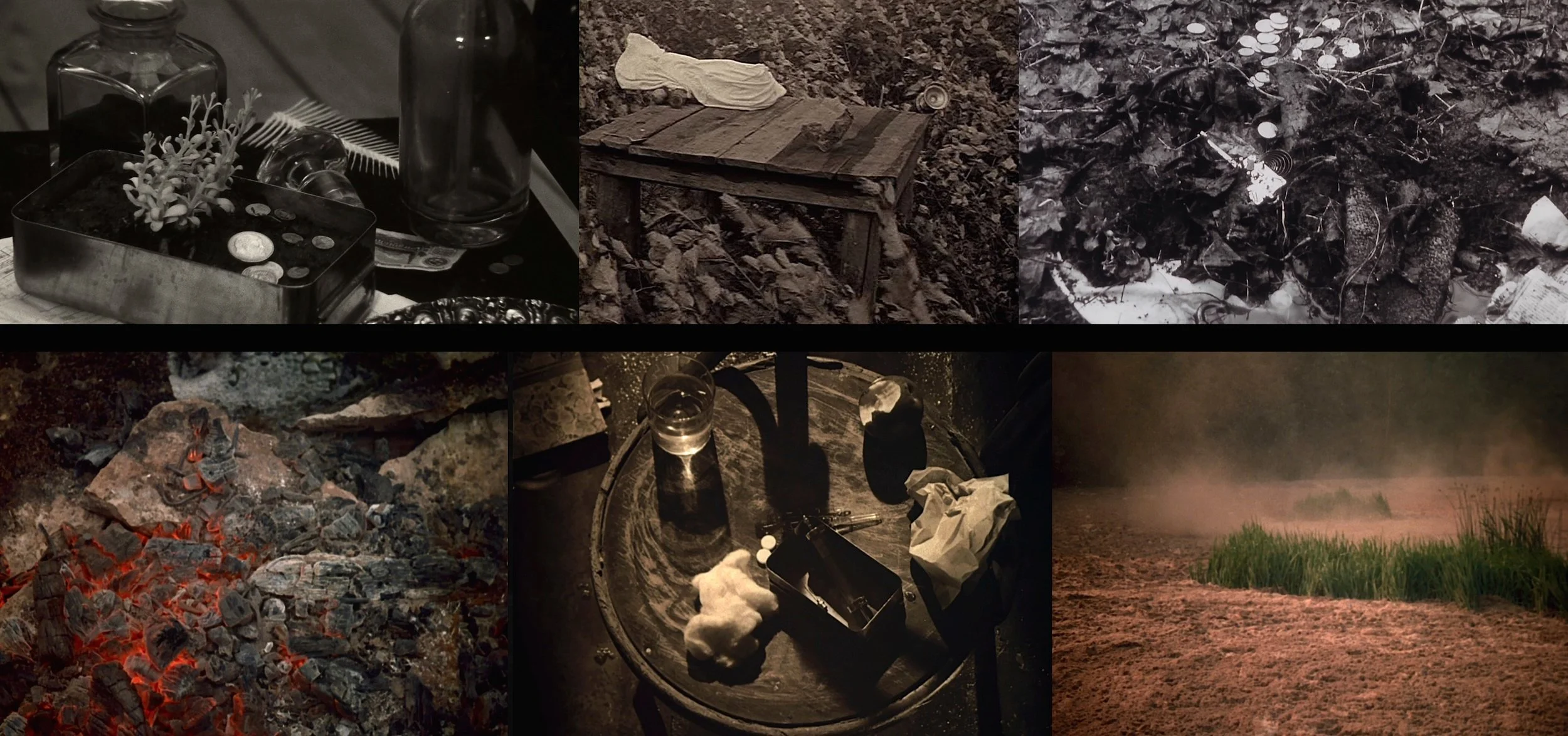THE TARKOVSKY SUITE: Andrei Tarkovsky's Cinema of Noise [2018]
A tribute to the film director Andrei Tarkovsky [1932-1986]
Dripping and splashing: Delicate water worlds as real and imagined acoustic spaces.
I trace my move into film back to three films that had a crucial influence on me: Robert Bresson's A Man Escaped [1956] Hiroshi Teshigahara's Woman of the Dunes [1964] and Andrei Tarkovsky's Stalker [1979]. It was in watching and listening to these three films that really sparked off my interest sound design for moving image. In particular it was Tarkovsky's complex, multi-layered approach to sound and music that really excited me. A cinema not merely subservient to narrative form, but, through the careful interplay of image and sound, emerged into a cinema of poetic atmosphere and mystery.
Since beginning the Cinema of Noise project it has always been my intention to compile a series of excerpts that are exclusively drawn from Tarkovsky's body of work. The Tarkovsky Suite [2018] is similar in this sense to The Bergman Suite from last year but differs in the way the material has been organised. In Bergman's films, particular from his middle period that I focused on, it was relatively easy to isolate and identify specific sound themes or devices that would reoccur through his work. Clocks, church bells, the sea, whispering voices, all this kind of material suggested a thematic approach to how I compiled the collection. In this regard we might say that Bergman's use of sound (and image some might argue) is more concerned with presenting the essentials, foregrounding only a few key sounds or musical gestures that he wishes us to attend to.
Tarkovsky on the other hand operates in an audiovisual style that feels to me much more elaborately orchestrated and complex. Sequences drift slowly; gentle camera pans and tracking shots are accompanied by layered sound elements, some seen others emanating from offscreen suggesting spatial depth beyond the frame. Tarkovsky's patient use of time to observe the world ("For the cinema image is essentially the observation of a phenomenon passing through time" - Sculpting in Time, p.67) literally frames the opportunity for the sound world to emerge.
The natural elements and forces: Objects mysteriously toppling over or rattling on rusty surfaces. Great winds appear from nowhere. The land glimmers with rich texture; everywhere the decaying objects of civilisation, half buried in the dirt and murky brown water.
The complexity of Tarkovsky's cinematic language doesn't present clear, concrete answers. Instead Tarkovsky seems more interested in shaping an atmosphere of mystery and ambiguity - questioning and suggesting beyond what we see and hear. American composer John Cage once asked a young Indian music student Gita Sarabhai, what, in her view was the purpose of music. She said that according to her Indian music instructor, the purpose of music was to "sober and quiet the mind, thus rendering it susceptible to divine influences". From a certain perspective this feels like a useful description of Tarkovsky's poetic style and perhaps, of art in general.
Andrea Truppin in her inspiring essay: And Then There Was Sound: The Films of Andrei Tarkovsky (1992) talks about "sound's potential for ambiguity and abstraction" and how this is deployed by the director to evoke the existence of unseen objects and to penetrate into the invisible spiritual world. Truppin writes: "Allowing a sound source to remain a figment of our imagination, mystifying rather than orienting, subverts sound's traditional role in film." Sound for Tarkovsky is a mysterious force; a device to help express different plains of reality - the inner caverns of the mind, the material world, nature and the spiritual plain. In film as in life it moves in mysterious ways. Like a gas, always fleeing, sound diffuses in and out of our field of vision, within and beyond the frame of the camera. Further thoughts on the ambiguity of sound in Tarkovsky's films are outlined in the text Booms, Bells and Distant Voices: The Ambiguity of Sound [2014]- accessible here.
Despite the complexity and evolving nature of Tarkovsky's audiovisual languge, I have managed to identify a few reoccurring elements that the director deploys in his films. These are the natural elements of water, wind and fire and each have been designated their own piece within the suite. Water in particular is so clearly felt through so many of Tarkovsky's films that I felt compelled to properly present the natural elements here as themes ostensibly dealing with nature ( - though Tarkovsky is on record as saying he uses rain because it rains a lot where he grew up). These three pieces sit along side extended sequences that deal with perhaps Tarkovsky's chief concern, the psychology of man, - his dreams, nightmares, visions and prayers.
The material that makes up The Tarkovsky Suite has not been sonically manipulated or processed. Edits have however been combined and layered using basic fades and leveling to create what is a essentially a series of sound collages. All source material is presented in its original monaural form.


